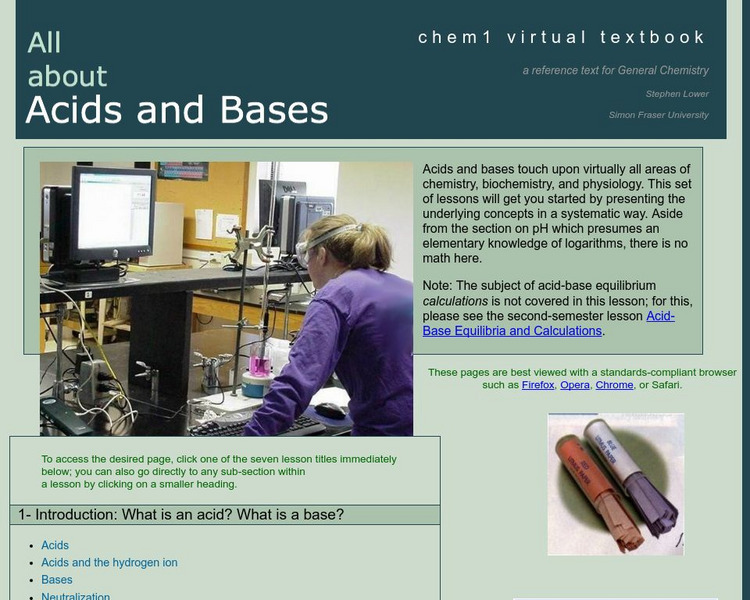Curated OER
Finding Oxidation States
For this chemistry worksheet, students examine the oxidation state in order to apply it in the laboratory setting. The sheet includes in depth background information.
Curated OER
Organic Chemistry II
In this chemistry worksheet, students write the structures for the compounds illustrated on the sheet. Then they name the compounds whose structures are illustrated in part two. Students also fill in the blanks to complete the paragraph...
PHET
AM Radio Ionosphere Station
Tune in! Young scientists use an AM radio at home to monitor solar output. The long-term project would be ideal in a flipped classroom or as an out-of-class project.
Curated OER
Build Your Own Atom
Young scholars build a model of an atom using an online program. For this chemistry lesson, students discuss the different parts of the atom. They complete an independent research about their chosen element.
Curated OER
Science Multiple Choice Words Worksheets
In this science worksheet, learners choose the multiple choice science term that best matches the 15 definitions stated. Students circle their answers.
Curated OER
Chemistry Final Exam Worksheet
For this chemistry worksheet, students take a final exam that is concerning the identification of the chemical compounds. The answers are also included.
Curated OER
The Many Faces of Energy
In this energy learning exercise, students are given a table of the many measurements of energy. They solve 6 problems converting from one measurement of energy to another using the conversion factors given.
Curated OER
Periodic Table Basics
In this periodic table worksheet, students answers 10 fill in the blank questions by reading information form a periodic table. Then also complete Bohr Models of the atoms of 12 different elements.
Curated OER
Solar Activity
In this solar activity worksheet, students complete a puzzle given a word bank with matching numbers. The numbers correlate to the answers to basic math problems that use the order of operations. Students use their mathematical answers...
Curated OER
Introduction to the Periodic Table
Eighth graders investigate the different elements of the Periodic Table. In this chemistry lesson, 8th graders pick an element to research, then present to the class using a powerpoint presentation or a poster.
Curated OER
Space: The Universe As We Know It!
Students simulate the Big Bang. In this lesson on the origin of our universe, students role play to show how the Big Bang explosion may have created our universe.
Curated OER
Periodic Trends
Learners identify the different periodic trends. In this chemistry lesson, students discuss how elements are arranged in the periodic table. They apply what they have learned in a Jeopardy team game.
Curated OER
Periodic Table Patterns using Fabulous Periodic
Young scholars explain how elements are arranged in the periodic table. In this chemistry instructional activity, students group the eggs according to a certain pattern. They compare this to elements in the periodic...
Curated OER
Exploring Atoms
In this chemistry worksheet, learners complete 29 fill in the bank questions about atoms based on the movie Exploring Atoms from the website www.brainpop.com .
Curated OER
Grade 6 Science Quiz
In this grade 6 science quiz, 6th graders complete a 15 question multiple choice quiz covering a variety of grade 6 concepts.
Curated OER
Astronomy Class
In this space science worksheet, students find the words associated with the basic terms of Astronomy. The answers are located at the bottom of the page.
Curated OER
Finding the Spot
Fourth graders use circles to "home in" on particular spots, showing the ability of scientists to locate unseen objects in space. This activity shows how scientists know certain objects exist in space due to the forces exerted by...
Curated OER
Jupiter's "Monstrous" Magnetosphere
Students explore Jupiter's magnetosphere. In this Jupiter lesson, students examine a diagram of the magnetic field that surrounds Jupiter.
California State University
Csudh Project for Chemistry: Protons, Electrons, and Neutrons
This page is an exercise in relating the number of protons, electrons, and neutrons for an atom or monoatomic ion.
Simon Fraser University
Chem1 Virtual Textbook: All About Acids and Bases
Acting as an overview from the General Chemistry Virtual Textbook, this site explores acids and bases and various topics connected to them, including electron pairs, proton donors, proton acceptors, acid-base reactions, and more.
Math Science Nucleus
Math/science Nucleus: Electrons and the Hairy Monster
This animation discusses electrons and the properties of electrons in a storybook format featuring hairy monsters, strange rocks, and fun animations.
American Chemical Society
Middle School Chemistry: Chapter 4: The Periodic Table and Bonding
Six middle school chemistry lessons about the periodic table and bonding complete with handouts and animations.
University of Colorado
University of Colorado: Ph Et Interactive Simulations: University of Colorado: Build and Atom
Build an atom out of protons, neutrons, and electrons, and see how the element, charge, and mass change. Then play a game to test how the ideas work!
American Chemical Society
Middle School Chemistry: Protons, Neutrons, and Electrons
Explore the particles that make up atoms: protons, electrons, and electrons.






















